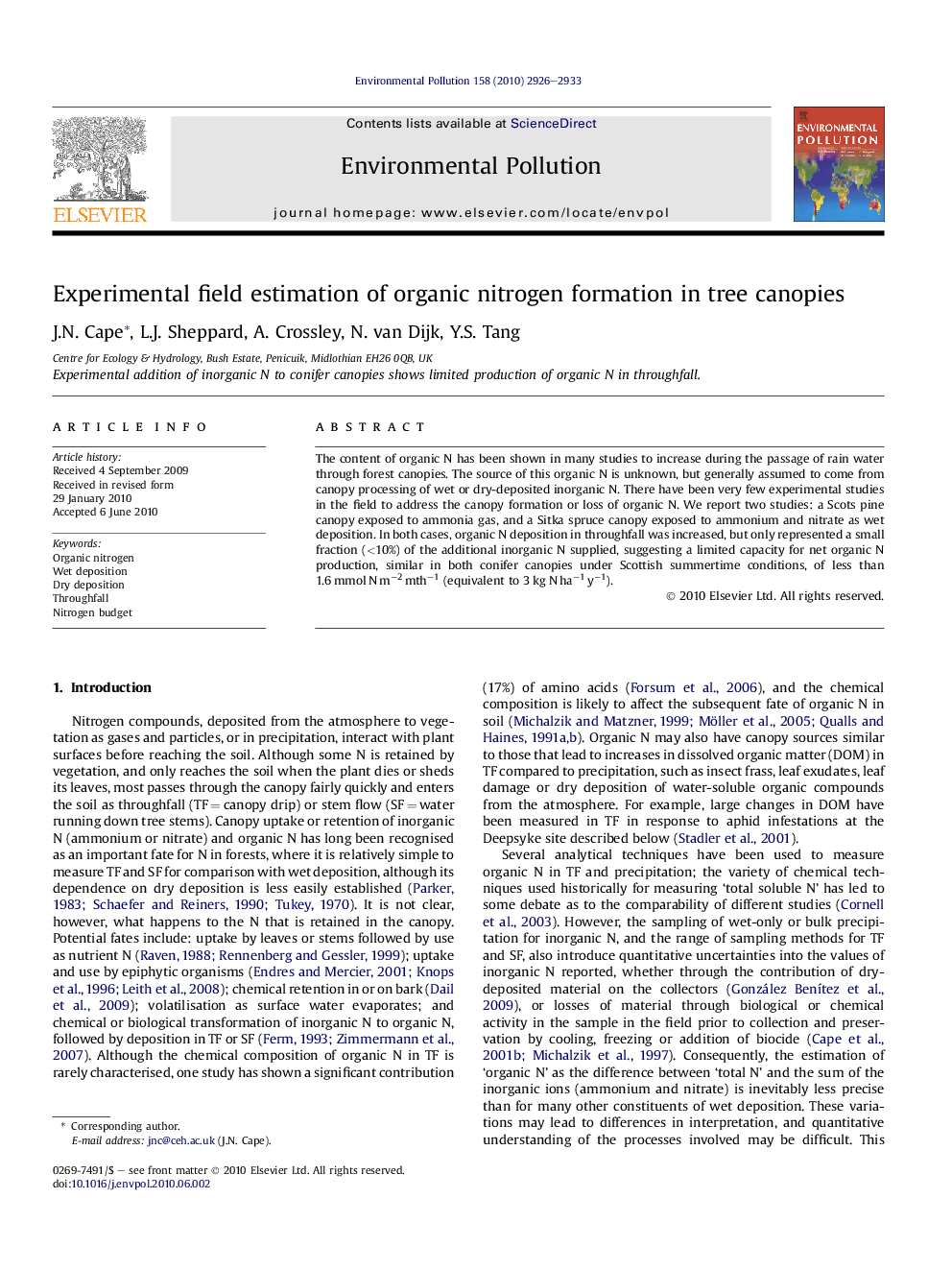| Article ID | Journal | Published Year | Pages | File Type |
|---|---|---|---|---|
| 4425829 | Environmental Pollution | 2010 | 8 Pages |
The content of organic N has been shown in many studies to increase during the passage of rain water through forest canopies. The source of this organic N is unknown, but generally assumed to come from canopy processing of wet or dry-deposited inorganic N. There have been very few experimental studies in the field to address the canopy formation or loss of organic N. We report two studies: a Scots pine canopy exposed to ammonia gas, and a Sitka spruce canopy exposed to ammonium and nitrate as wet deposition. In both cases, organic N deposition in throughfall was increased, but only represented a small fraction (<10%) of the additional inorganic N supplied, suggesting a limited capacity for net organic N production, similar in both conifer canopies under Scottish summertime conditions, of less than 1.6 mmol N m−2 mth−1 (equivalent to 3 kg N ha−1 y−1).
